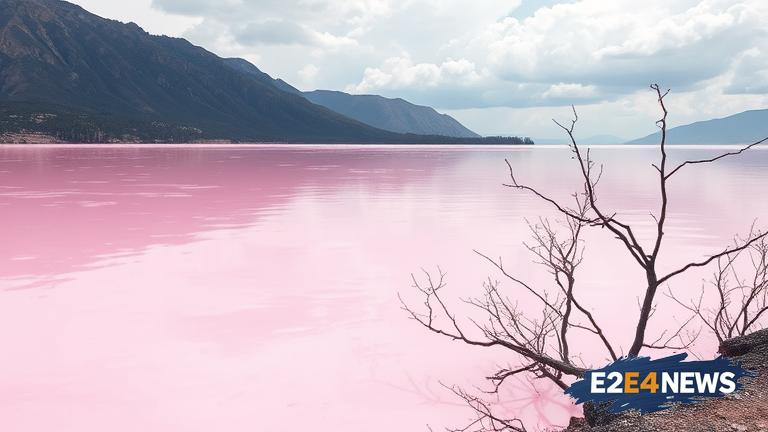The internet has been abuzz with a viral video featuring a lake with a vibrant pink hue, leaving many to wonder about the science behind this phenomenon. The footage, which has been viewed millions of times, appears to show a lake with a bright pink color, sparking both amazement and curiosity. However, as with many things on the internet, the truth behind the video is not entirely clear. According to experts, the pink coloration of the lake is likely due to the presence of certain microorganisms, such as algae or bacteria, that produce pigments. These microorganisms can thrive in environments with high salinity and nutrient levels, which can cause the water to take on a pink or reddish hue. One of the most famous examples of a pink lake is Lake Hillier in Australia, which is known for its bright pink color. However, the lake in the viral video is not Lake Hillier, and its exact location is still unknown. Some have speculated that the lake may be located in the Middle East or Africa, where there are several lakes and saltwater bodies that are known to exhibit similar coloration. Despite the uncertainty surrounding the lake’s location, the video has sparked a lively debate about the science behind the phenomenon. Many have taken to social media to share their own theories and explanations, ranging from the presence of algae and bacteria to more exotic explanations, such as the presence of rare minerals or even extraterrestrial activity. However, experts caution that the true explanation is likely to be much more mundane, and that the pink coloration is simply a result of natural processes. The viral video has also raised questions about the impact of social media on our perception of reality, and how easily misinformation can spread. As with many viral phenomena, the truth behind the pink lake video is likely to be complex and multifaceted, and may never be fully known. Nevertheless, the video has sparked a fascinating conversation about the natural world and the science behind it. The pink lake phenomenon is a reminder of the awe-inspiring beauty and complexity of the natural world, and the importance of approaching such phenomena with a critical and nuanced perspective. In conclusion, while the truth behind the viral pink lake video may never be fully known, it has sparked a lively and fascinating conversation about the science behind this natural wonder. The phenomenon is a reminder of the importance of approaching such events with a critical and nuanced perspective, and of the need to separate fact from fiction in the age of social media. As we continue to learn more about the natural world and the science behind it, we are reminded of the importance of preserving and protecting our planet’s natural wonders for future generations. The pink lake phenomenon is just one example of the many fascinating and complex natural phenomena that exist on our planet, and it serves as a reminder of the importance of continued scientific research and exploration. By studying such phenomena, we can gain a deeper understanding of the natural world and the processes that shape it. Furthermore, the pink lake phenomenon highlights the importance of interdisciplinary research and collaboration, as scientists from a range of fields, including biology, chemistry, and geology, work together to understand the complex processes that underlie this natural wonder. As we move forward in our understanding of the pink lake phenomenon, we are reminded of the importance of communicating complex scientific concepts to the general public, and of the need for clear and accurate information in the age of social media. By working together to understand and explain such phenomena, we can promote a greater appreciation and understanding of the natural world, and inspire future generations of scientists and researchers.





